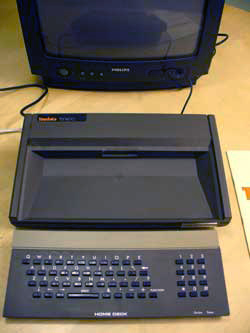What started e-commerce
Pizza Hut claims that the first online purchase was a big pepperoni with mushrooms and extra cheese in 1994. But the New York Times is sure that the first online purchase has nothing to do with pizza.
To look at the history of e-commerce, you need to dig even deeper.

Jane Snowball, the first customer in the network
In 1969, the United States Department of Defense Advanced Research Agency (DARPA) created the ARPANET network, which was used for communication between universities. First, the network included four scientific institutions, then in 1971 another 15 terminals connected to it, and in 1973 foreign organizations from the United Kingdom and Norway joined it. One email on ARPANET cost 50 cents.
')
What will students be able to do if they are able to communicate with the best minds of the best universities? In 1971-1972, a Stanford student bought banned plant-derived substances from a student at MIT. But this cannot be considered the first online purchase, because it is illegal, and the process itself was a simple conversation, and not the use of a special site, basket and payment method.
In the 1980s in the UK, Michael Eldrich combined the television with the processing system using a telephone line. This invention was intended for pensioners and the disabled - so that they could shop from home. The system helped to find out the weather, TV program and news. The first buyer in this system was 72-year-old Jane Snowball in 1984. She ordered margarine, oatmeal, and eggs, paying in cash after delivery.

Terminal videoteksa. Photo: Wikipedia
In 1989, Tim Berners-Lee proposed the concept of the World Wide Web. The project involved the publication of hypertext documents with hyperlinks to facilitate the search for information for scientists. On August 6, 1991, Berners-Lee posted the world's first website at http://info.cern.ch/ . Three years later, Dan Kohn (Dan Kohn) founded the Netmarket, and the first purchase was the disc Sting - with online payment using a bank card.
EMarketer in 2015 predicts the volume of electronic commerce in the amount of 1.672 trillion dollars, and by 2019 this figure could grow to 3.5 trillion.
To look at the history of e-commerce, you need to dig even deeper.

Jane Snowball, the first customer in the network
In 1969, the United States Department of Defense Advanced Research Agency (DARPA) created the ARPANET network, which was used for communication between universities. First, the network included four scientific institutions, then in 1971 another 15 terminals connected to it, and in 1973 foreign organizations from the United Kingdom and Norway joined it. One email on ARPANET cost 50 cents.
')
What will students be able to do if they are able to communicate with the best minds of the best universities? In 1971-1972, a Stanford student bought banned plant-derived substances from a student at MIT. But this cannot be considered the first online purchase, because it is illegal, and the process itself was a simple conversation, and not the use of a special site, basket and payment method.
In the 1980s in the UK, Michael Eldrich combined the television with the processing system using a telephone line. This invention was intended for pensioners and the disabled - so that they could shop from home. The system helped to find out the weather, TV program and news. The first buyer in this system was 72-year-old Jane Snowball in 1984. She ordered margarine, oatmeal, and eggs, paying in cash after delivery.

Terminal videoteksa. Photo: Wikipedia
In 1989, Tim Berners-Lee proposed the concept of the World Wide Web. The project involved the publication of hypertext documents with hyperlinks to facilitate the search for information for scientists. On August 6, 1991, Berners-Lee posted the world's first website at http://info.cern.ch/ . Three years later, Dan Kohn (Dan Kohn) founded the Netmarket, and the first purchase was the disc Sting - with online payment using a bank card.
EMarketer in 2015 predicts the volume of electronic commerce in the amount of 1.672 trillion dollars, and by 2019 this figure could grow to 3.5 trillion.
Source: https://habr.com/ru/post/296780/
All Articles